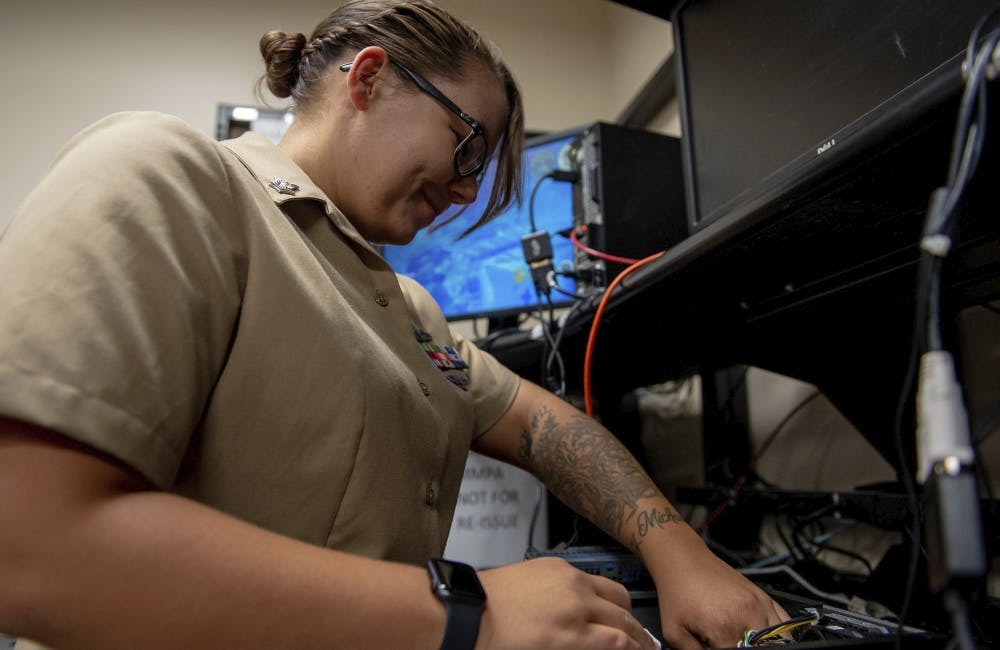Edge Computing Critical To JADC2 Success
The joint force needs transformational computing technologies to achieve JADC2.

Edge computing will play a critical role in the Defense Department’s efforts to implement the Joint All-Domain Command-and-Control (JADC2) concept to put actionable data in the hands of the warfighter, according to a Naval Information Warfare Center senior software engineer speaking at a MeriTalk event this week.
Various military platforms depend on sensors collecting enormous amounts of data to support multi-domain missions. Edge computing capabilities enable processing sensor data in real-time, analyzing and producing insights at mission-speed and interacting with captured data at various connectivity levels.
As the Department of the Navy’s edge computing architecture evolves, breaking down physical silos is a key area of concern.
“One of our challenges, specifically in the Navy … is almost every technology that comes to me, a piece of software tends to be delivered on a physical device,” Richard Jack, senior software engineer at NIWC PACIFIC, said at the MeriTalk Insights at the Edge panel. “So, how do I take it off the laptop? And so what we’re trying to do is democratize this capability in such a way that allows people to deliver us capability without delivering us the physical constraints that the software is being delivered upon.”
Successful edge computing, he added, keeps user experience top of mind.
“When I talked to the services, I think I tried to emphasize that we prioritize and emphasize understanding who our operators are. That is the most important concept to really get our heads around when we start talking about edge computing,” Jack said. “There’s a human capital behind this that I really like to think about. So that’s what I would advocate to all of our partners here as we go through these things.”
The way the capabilities are delivered needs to be simplified, he said, and the skill sets need to be more adaptable for warfighters to execute their mission.
“If we’re going to do that, we’re going to have to make it simpler,” Jack said. “If we’re going to provide capabilities to warfighters, that needs to be able to be operated by our sailors, marines, soldiers, and airmen that are actually going to use these capabilities.”
Machine learning (ML) and automation can also improve edge computing processing times.
“Machine learning is at our doorsteps. We’re starting to play around relative to how we’re actually going to enable mission effect with machine learning,” Rick said. “With that comes the burden of ‘how do we keep cadence with the accelerated pattern of the way we’re getting after this? You know, machine learning comes with a constant cadence of … being adaptable.”
Because of the distributed nature of DOD, data is always on the move, which puts the data at greater cybersecurity risk. To keep edge data secure, zero trust will be crucial to addressing the threat landscape and handling interconnected devices.
“If we think about tactical edge computing, the key cyber effects that we care about is really embracing those protections that are in place – proper encryption, excellent controls that we have in place,” Jack said. “Zero trust is going to be the key element … that’s going to help us really solve a lot of these problems. That is a journey by the way … It takes a while, it’s an important part of this.”
This is a carousel with manually rotating slides. Use Next and Previous buttons to navigate or jump to a slide with the slide dots
-

How Military Technologists Can Move Seamlessly into Commercial Innovation
Technology can serve as a tie between government and industry career paths. Datadog’s Greg Reeder shares perspective for federal employees exploring commercial roles.
5m watch -

NASA Chief Pushes Agency to the 'Near Impossible'
Billionaire entrepreneur and former astronaut Jared Isaacman brings plans for a lunar base, nuclear space tech and deeper ties to industry.
4m read -

Tracking CIOs in Trump's Second Term
Stay informed on the latest shifts in federal technology leadership as new CIOs are appointed and President Trump's second term takes shape.
6m read -

How the Navy is Scaling Zero Trust With Flank Speed
Cyber officials say cloud platforms like Flank Speed are key to applying zero trust across enterprise IT and operational technology systems.
3m read








